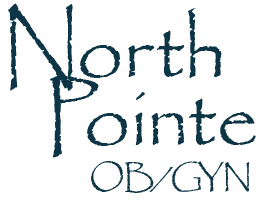Power Peeing and Your Pelvic Floor: Why This Viral Trend Is Actually Harming Your Bladder Health

A recent social media video warning against “power peeing” has garnered over 46 million views, and for good reason. This viral moment has opened an important conversation about something many women do daily without realizing the potential consequences for their bladder health and pelvic floor function.
The term “power peeing” refers to the habit of pushing or straining to force urine out more quickly, often while hovering over public toilets. While this might seem like a harmless way to speed up bathroom visits, pelvic floor experts are sounding the alarm about the long-term damage this practice can cause.
Understanding Your Pelvic Floor’s Role in Bladder Health
Your pelvic floor is far more than just a group of muscles tucked away in your pelvis. The pelvic floor is a group of muscles and tissues that support important organs like the bladder, urethra, anus—and in women—the uterus, cervix, and vagina. These muscles help keep the pelvic organs in place and sustain bladder and bowel control.
Think of your pelvic floor as a supportive hammock that cradles your internal organs. When functioning properly, these muscles work in perfect coordination with your bladder during urination. The process should be automatic and relaxed, not forced.
The Hidden Dangers of Power Peeing
When you push or strain to empty your bladder, you’re disrupting a complex relationship between your brain, bladder, and pelvic floor muscles. This approach, according to Reardon, can weaken your pelvic floor muscles and cause urinary incontinence and other bladder problems.
Here’s what happens during normal, healthy urination:
- Step One: Your bladder fills and signals your brain when it’s time to go
- Step Two: Your brain gives the green light, telling your bladder muscle to contract
- Step Three: Your pelvic floor muscles relax, allowing urine to pass through smoothly
- Step Four: Your bladder empties completely, and your pelvic floor contracts to prevent leakage
Power peeing forces this delicate system out of balance, potentially leading to:
- Incomplete bladder emptying: When muscles are tense from straining, your bladder may not empty completely
- Increased UTI risk: Residual urine in the bladder creates an environment where bacteria can thrive
- Weakened pelvic floor: Chronic straining puts excessive pressure on these crucial support muscles
- Bladder dysfunction: Over time, the natural coordination between your brain and bladder can become disrupted
Why Women Fall Into the Power Peeing Trap
Most women who power pee aren’t doing it intentionally. Several common scenarios lead to this problematic habit:
Public restroom hovering: The urge to avoid sitting on public toilet seats leads many women to hover in a semi-squat position. This stance engages your core, hip, and pelvic floor muscles simultaneously, making it difficult for your pelvic floor to relax properly.
Time pressures: In our busy lives, many women try to rush through bathroom breaks, pushing to speed up the process.
“Just in case” mentality: Going to the bathroom when you don’t truly need to often requires straining since your bladder isn’t naturally ready to empty.
Recognizing the Warning Signs
Pelvic floor dysfunction (PFD) encompasses a range of conditions affecting the pelvic floor muscles and connective tissues, leading to compromised support of pelvic organs such as the bladder, uterus, and rectum. Pay attention to these potential symptoms:
Signs of pelvic floor tension:
- Difficulty starting your urine stream
- Feeling like your bladder doesn’t empty completely
- Frequent returns to the bathroom shortly after urinating
- Constipation or straining during bowel movements • Pain during intercourse or pelvic exams
Signs of pelvic floor weakness:
- Urinary leakage when coughing, sneezing, or exercising
- Sudden, urgent needs to urinate
- Feeling of heaviness or pressure in your pelvis
- Reduced sensation during intercourse
The Cumming Connection: Statistics That Matter
These conditions affect approximately 1 in 4 women at some point in their lives. For women in the Cumming area, understanding pelvic floor health is particularly important as we navigate busy lifestyles between work, family, and recreational activities around the greater Cumming region.
The prevalence of PFD increased with age and BMI (except in the case of POP) and were less common in individuals who identify as Asian. This means that as our local community ages and lifestyle factors change, awareness becomes even more critical.
Breaking the Power Peeing Habit: Practical Solutions
Perfect your bathroom technique:
- Sit fully on the toilet seat rather than hovering
- Take a deep breath and consciously relax your pelvic floor muscles
- Allow your bladder to empty naturally without pushing
- Don’t rush – give your body the time it needs
Rethink public restrooms:
- Use toilet seat covers or lay down toilet paper for peace of mind
- Carry sanitizing wipes to clean the seat if needed
- Remember that your phone likely harbors more germs than most toilet seats
Time your bathroom breaks wisely:
- Only go when you truly feel the urge
- Avoid “just in case” bathroom visits unless absolutely necessary
- Don’t delay when you genuinely need to go
Strengthening Your Pelvic Floor the Right Way
Proper pelvic floor care involves both strengthening and relaxation techniques:
Kegel exercises for strength:
- Practice quick contractions followed by complete relaxation
- Hold longer contractions for 5-10 seconds, then fully release
- Remember the mantra: “Squeeze before you sneeze” or “Kegel before you cough”
- Incorporate Kegels into various positions and activities
Relaxation techniques:
- Practice diaphragmatic breathing to help your pelvic floor muscles release
- Use reverse Kegels – consciously relaxing and gently lengthening these muscles
- Consider pelvic floor physical therapy if you’re experiencing symptoms
When Professional Help Makes a Difference
Studies have shown it can improve bowel and bladder control, make sex more enjoyable, decrease lower back pain and improve postpartum recovery. If you’re experiencing persistent symptoms, pelvic floor physical therapy can be transformative.
Signs it’s time to seek professional help:
- Persistent leakage during daily activities
- Chronic pelvic pain or pressure • Difficulty with intimacy due to pain or dysfunction
- Recurring urinary tract infections
- Feeling like something is “falling out” of your vagina
Beyond the Trending Topic: Comprehensive Bladder Health
While the power peeing conversation has brought important attention to pelvic floor health, comprehensive bladder wellness extends beyond bathroom technique:
Hydration habits: Drink adequate water throughout the day, but be mindful of timing around important activities or bedtime.
Dietary considerations: Limit bladder irritants like caffeine, alcohol, and spicy foods if you notice they trigger symptoms.
Exercise wisely: High-impact activities can stress a weakened pelvic floor, so build strength gradually and consider modifications when needed.
Hormonal awareness: Menopause and hormonal changes can significantly impact bladder and pelvic floor health, making professional guidance particularly valuable during these transitions.
Take Action for Your Pelvic Floor Health in Cumming
The viral attention around power peeing reflects a deeper truth: many women have been unknowingly compromising their pelvic floor health through everyday habits. This national women’s health week break the silence around pelvic floor disorders.
You don’t have to accept bladder leakage, pelvic pressure, or bathroom dysfunction as a normal part of being a woman. These issues are common, but they’re also treatable with the right approach and professional guidance.
The conversation about power peeing has opened the door to broader discussions about women’s pelvic health – discussions that can lead to real improvements in your quality of life. Whether you’re dealing with post-pregnancy changes, age-related concerns, or simply want to optimize your pelvic floor health, taking action now can prevent bigger problems down the road.
Schedule Your Pelvic Floor Health Consultation
Don’t let trending topics be your only source of pelvic health information. At North Pointe OB/GYN in Cumming, our experienced team understands the intricate connections between hormonal health, pelvic floor function, and overall wellness. We’re here to provide personalized care that addresses your unique needs and concerns. Ready to move beyond viral videos and get professional insight into your bladder and pelvic floor health? Contact North Pointe OB/GYN today to schedule a consultation and take the first step toward optimal pelvic wellness.


